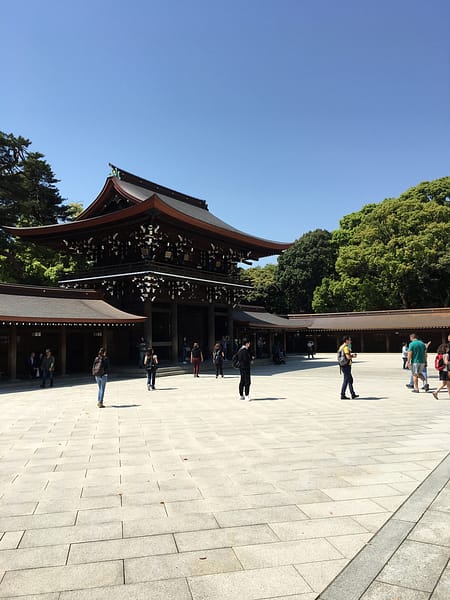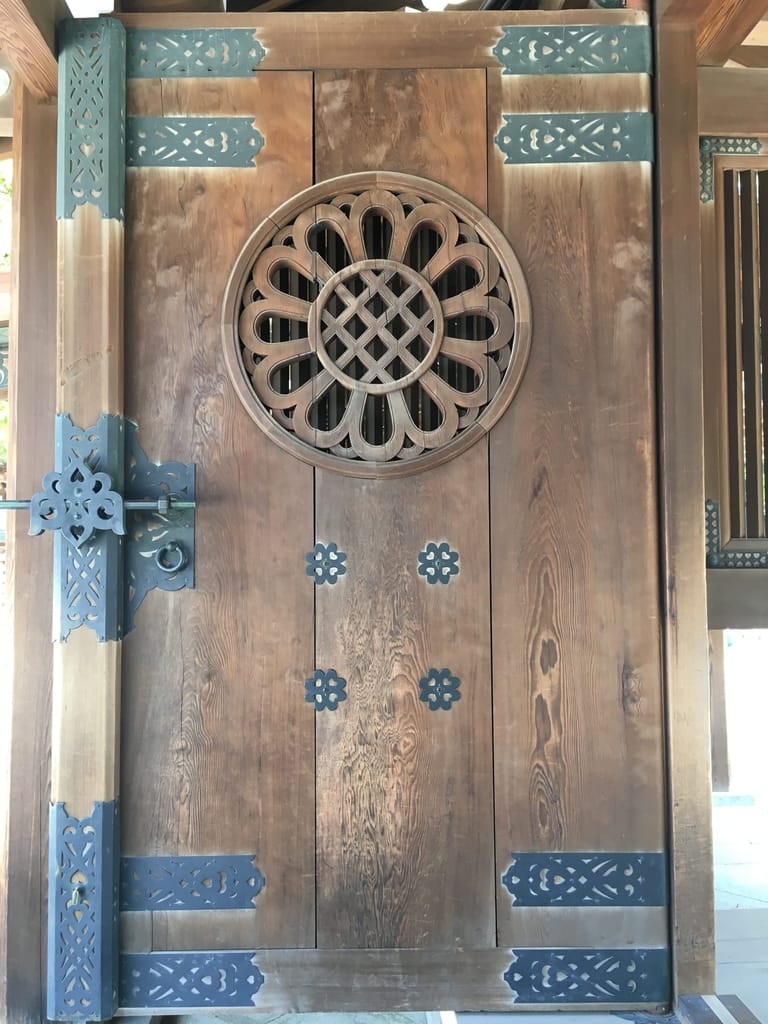shrine: n. a place regarded as holy because of its associations with a divinity or a sacred person or relic, marked by a building or other construction.
There are lots of shrines in Japan. According to a recent survey, nearly 80% of the Japanese population practices the Shinto religion. As part of Shintoism, shrines house spirits of the deceased. Some are big and some are small, but shrines serve a major function in Japan – connecting present day with the past. One of the most well-known shrines in Japan resides in Tokyo. Meiji Jingu, also known as Meiji Shrine, was one of the first things Husband and I saw in the city. It was our first weekend in the country, and we were visiting with friends from my hometown. They had moved to Japan about a year before.
After an anxious train ride (who knew so many people could fit in one tiny space!?), we exit the JR Yamanote line at Harajuku. Not long after stepping off the train we were walking through the shrine’s 700,000 square-meter complex (about 172 acres).
Meiji Jingu is dedicated to Emperor Meiji and Empress Shoken, his wife. Emperor Meiji was the first emperor of modern Japan. The country had joined the other world powers before the Emperor passed away in 1912. Empress Shoken followed shortly after in 1914. The original Meiji shrine was established in November 1920. Although it was largely destroyed in World War 2, reconstruction was completed shortly after the war ended.
Contemporary + Tradition Side by Side
The green space in the middle of the bustling city is astounding. Think New York’s Central Park, although Meiji Jingu feels much wilder, with thick foliage and wide gravel paths. We entered the grounds by passing through a massive torii gate. Torii gates mark the entrances to shrines and other sacred Shinto spaces. They distinguish the transition from ordinary, every day spaces to sacred spaces.
As with most shrines, visitors can make offerings at the main hall. Here, you can also purchase charms or leave wishes written on wooden ema. This was our first visit to a shrine so we were very careful to be respectful of the local customs. (Curious about how to be respectful at a shrine? This map, although specific to Meiji Shrine, offers some great tips. Just click on an area and more information and customs will come up). Since our first visit, we’ve been back a few times. Surprisingly, we’ve been able to witness a wedding procession every time! Meiji shrine is hugely popular for traditional Shinto weddings.
I highly recommend making this a stop on your Tokyo tour. The intricate construction of the shrine perfectly embodies the strong value the Japanese place on harmony. Its symmetrical designs and intricate styling is pleasing to the eye. The green space that encases the shrine is a lovely respite from the bustling activity of the city. You may even forget you’re in Tokyo!
What other shrines or unexpected places have you visited? Leave a comment below so we can check them out!









I can’t imagine that green space in the middle of an urban city?! I’ve read all of your blog posts on this journey; thanks for taking readers on it with you!
It’s pretty amazing. Sometimes I get overstimulated in big cities, so I really appreciate places of visual rest like this. Thanks for reading! It’s been fun sitting down to record our experiences and have something to look back on. Come and visit anytime – we’d love to have you!
Yeah, I could see where big cities could be overstimulating.
Thank you for the invite; that is so sweet! I’ll let you know if I head that way for travel. Ireland is the next international place on my list; I’d like to go by 40. It’s been five years since my last overseas trip, which was a short term international missions one.
Spend some time in Kyoto and visit the many shrines there too, especially Kinkakuji (Gold Shrine) and the Silver Shrine. I will go back to my travel journal of Japan. I remember visiting some really amazing places, and as you write, some of them are quite small, but largely inspiring.
Keep writing! Hugs, K
We’re hoping to get out that way soon! We’ve got a running list of places to see and things to do! Hopefully we can whittle it down at least a bit while we’re here <3